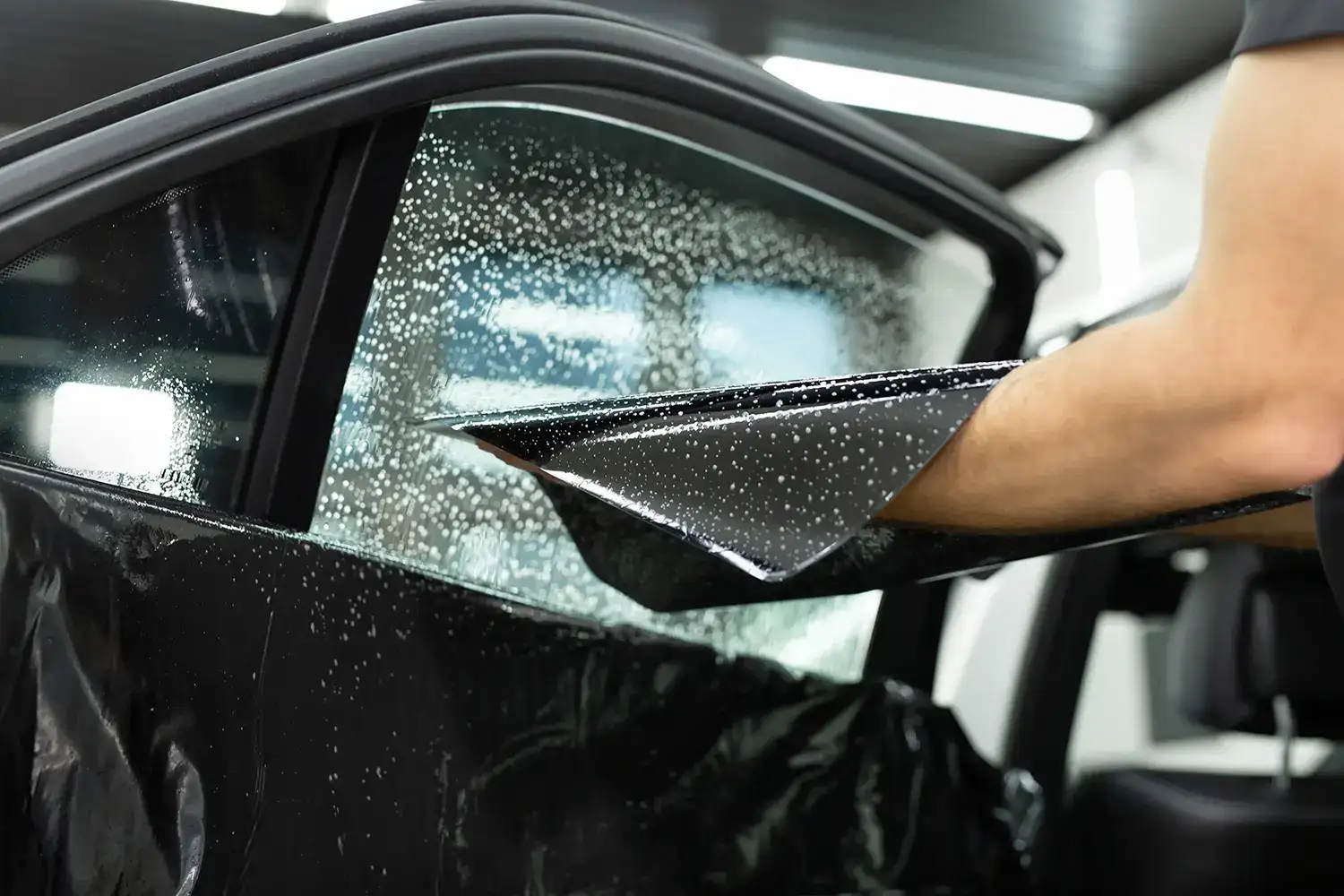How Window Tinting Can Boost Your Car's Personal privacy and Style
How Window Tinting Can Boost Your Car's Personal privacy and Style
Blog Article
The Refine of Specialist Home Window Tinting Explained
From selecting the right film type to the thorough preparation of home windows, each step plays an essential function in attaining a remarkable application. Adhering to these first preparations, the careful cutting and application of the movie need precision to prevent blemishes.
Picking the Right Home Window Movie
The initial factor to consider is the kind of movie, which can vary from colored, metalized, to ceramic films (window tinting). Dyed movies largely provide privacy and aesthetic enhancement, while metalized films mirror heat and UV rays, boosting energy effectiveness.
Next, think about the movie's Visible Light Transmission (VLT) percent, which establishes just how much light goes into the area. A reduced VLT gives better privacy and warm being rejected but may minimize natural light substantially. Furthermore, the film's solar heat gain coefficient (SHGC) is crucial; a lower SHGC shows far better thermal efficiency, helping to keep indoor comfort.

Preparing the Windows
As soon as the suitable window film has actually been selected, the following step is thoroughly preparing the windows for installment. This prep work is critical for attaining optimum bond and guaranteeing a remarkable appearance post-installation.
The first task entails cleaning the windows carefully (window tinting). A high-grade glass cleaner is important, ideally one that is ammonia-free to avoid destructive any window seals or tint materials. Using a lint-free cloth or paper towels, technicians need to get rid of any kind of dirt, dust, or oil, paying unique interest to the sides and corners where particles commonly collects

Cutting the Movie
An accurate method to cutting the movie is necessary for guaranteeing a best fit on the prepared windows. This step needs both ability and attention to detail, as inaccuracies can lead to unsightly spaces or overlaps that compromise the aesthetic and practical high qualities of the tint.
Before cutting, the expert must measure the home window dimensions properly, representing any distinct shapes or contours. It is advisable to use high-grade window film, as this product tends to be much more forgiving throughout the reducing process. The film is normally laid level on a tidy, smooth surface, and a sharp utility blade is employed to ensure tidy sides.
To attain ideal outcomes, lots of experts use themes produced from previous installments or utilize software application to develop accurate patterns. An usual strategy entails including an additional margin to the theme, permitting changes throughout the application phase.
Moreover, cutting the film in a controlled atmosphere lessens the danger of pollutants influencing the adhesive side. By adhering to these careful practices, home window tinting experts can guarantee that the film not just fits seamlessly Read Full Article however likewise does successfully gradually, improving both appearance and functionality.
Using the Color
After thoroughly cutting the film to the proper measurements, the following step involves applying the color to the home window surface. This process starts with making sure that the home window is tidy and without any dirt, particles, or residues that could affect adhesion. A customized cleaning remedy is usually utilized, followed by extensive drying with a lint-free cloth.
Once the surface area is prepared, the installer will carefully position the color film versus the glass. It is imperative to straighten the movie accurately to stay clear of misplacement, as any type of mistakes can cause an unprofessional look. To facilitate this, the installer might use a light haze of application service on the glue side of the movie, enabling mild repositioning if necessary.
Utilizing a squeegee, the installer will after that begin to push the film onto the glass, functioning from the center in an outward direction to get rid of air bubbles and ensure a firm bond. This method is important, as it ensures a smooth and flawless finish. Throughout the application, focus to information is important to avoid folds or flaws, ensuring that the tint not only improves aesthetics yet likewise gives the wanted performance.
Final Inspection and Treatment
The final inspection is a crucial step in the window tinting procedure, making certain that the installation satisfies both aesthetic and functional criteria. During this stage, experts diligently take a look at the mounted tint for any type of flaws, such as bubbles, folds, or misalignments. A navigate to this website thorough assessment likewise includes examining the adherence of the film to the glass, in addition to its uniformity and total appearance.
After the examination, proper care and upkeep guidelines are given to the client. It is important to notify them about the recommended timeline for cleaning up the tinted home windows, typically suggesting a delay of at least thirty day after installation to enable the sticky to treat completely. Clients should be informed on suitable cleansing items and methods, emphasizing the avoidance of ammonia-based cleaners that can damage the tint.
Furthermore, specialists need to advise consumers on the importance of regular upkeep to lengthen the life of the tint. This includes routine look for indications of wear or damage and responding promptly to any kind of problems. By making certain a detailed last inspection and supplying clear care guidelines, window tinting experts improve customer complete satisfaction and the long life of their job.
Final Thought
The expert home window tinting process he said incorporates numerous essential steps that guarantee top quality results. Choosing the appropriate film type, preparing the windows meticulously, precisely reducing the movie, and applying it with accuracy are essential for attaining a flawless surface.
Report this page